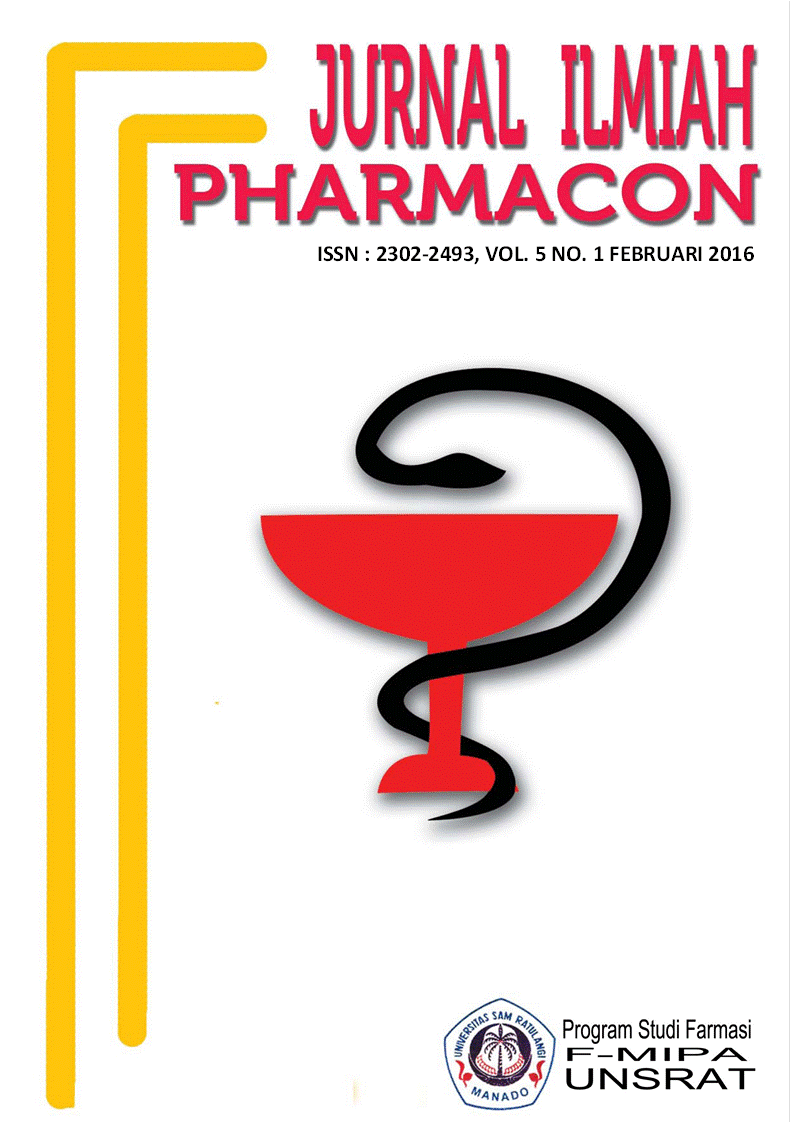GAMBARAN KECEMASAN PASIEN EKSTRAKSI GIGI DI RUMAH SAKIT GIGI DAN MULUT (RSGM) UNSRAT
DOI:
https://doi.org/10.35799/pha.5.2016.11222Abstract
GAMBARAN KECEMASAN PASIEN EKSTRAKSI GIGI DI RUMAH SAKIT GIGI DAN MULUT (RSGM) UNSRAT
Nurrany Brany Yahya1), Michael Andreas Leman1), Bernart S.P Hutagalung1)
1) Program Studi Pendidikan Dokter Gigi Fakultas Kedokteran, UNSRAT
Â
ABSTRACT
Anxiety is a normal response that frequently and experience by everyone when dealing with something that is considered in threatening and can be affect a person’s behavior. Anxiety can occur in various situations and coditions, one of which is dental anxiety. So that, needed for the approach and good communication from the dentist to the patient to reduce anxiety in order not to cause problems in the dental extractions in Rumah Sakit Gigi dan Mulut (RSGM) Unsrat in age category early adults, mid adults and elderly. This type of research is a descriptive with a qualitative approach (individual interviews). This research was conducted in the fourth week in August to the third week of September 2015. Sampling by using total sampling. The results showed that the age category most anxious is early adulthood. Results found also showed that of the 13 sampels, most of which were most worried are female. There are several factors that influence anxiety, but the most influential is the anxiety of samples of the onset of pain when action tooth extraction. Lack of information regarding the action to be performed dental health wokers about dental extractions can also cause anxiety to the patient.
Key words: dental Anxiety, tooth extraction, adult patients
ABSTRAK
Kecemasan merupakan respon normal yang sering terjadi dan dialami semua orang ketika menghadapi sesuatu yang dianggap mengancam dan dapat mempengaruhi perilaku seseorang. Kecemasan dapat terjadi dalam berbagai situasi dan kondisi, salah satunya ialah kecemasan dental (dental anxiety). Penelitian ini bertujuan untuk melihat gambaran kecemasan pasien ekstraksi gigi di Rumah Sakit Gigi Mulut (RSGM) pada pasien kategori usia dewasa awal (18-40 tahun), dewasa pertengahan (40-60 tahun) dan lanjut usia (< 60 tahun).Jenis penelitian yang digunakan yaitu deskriptif dengan menggunakan pendekatan kualitatif (wawancara perorangan).Penelitian ini dilakukan pada minggu ke empat dibulan agustus sampai dengan minggu ke tiga dibulan september. Pengambilan sampel dengan menggunakan metode total sampling. Hasil penelitian menunjukkan kategori usia yang paling banyak merasa cemas yaitu dewasa awal. Hasil yang ada juga menunjukkan bahwa dari 13 subjek penelitian, sebagian besar yang paling banyak merasa cemas adalah perempuan. Beberapa faktor yang mempengaruhi kecemasan salah satu diantaranya yang paling berpengaruh yakni kecemasan subjek terhadap timbulnya rasa sakit saat dilakukan tindakan pencabutan gigi.Kurangnya informasi yang diberikan oleh tenaga kesehatan kepada subjek mengenai perawatan yang akan dilakukan khususnya ekstraksi gigi juga dapat menjadi salah satu faktor pencetus timbulnya rasa cemas.
Kata kunci: kecemasan dental, ektraksi gigi, pasien dewasa
Downloads
Published
How to Cite
Issue
Section
License
Authors who publish with this journal agree to the following terms:
- Authors retain copyright and grant the journal right of first publication with the work simultaneously licensed under a Creative Commons Attribution-NonCommercial 4.0 International License that allows others to share the work with an acknowledgement of the work's authorship and initial publication in this journal.
- Authors are permitted and encouraged to post their work online (e.g., in institutional repositories or on their website) prior to and during the submission process, as it can lead to productive exchanges, as well as earlier and greater citation of published work (See The Effect of Open Access)










